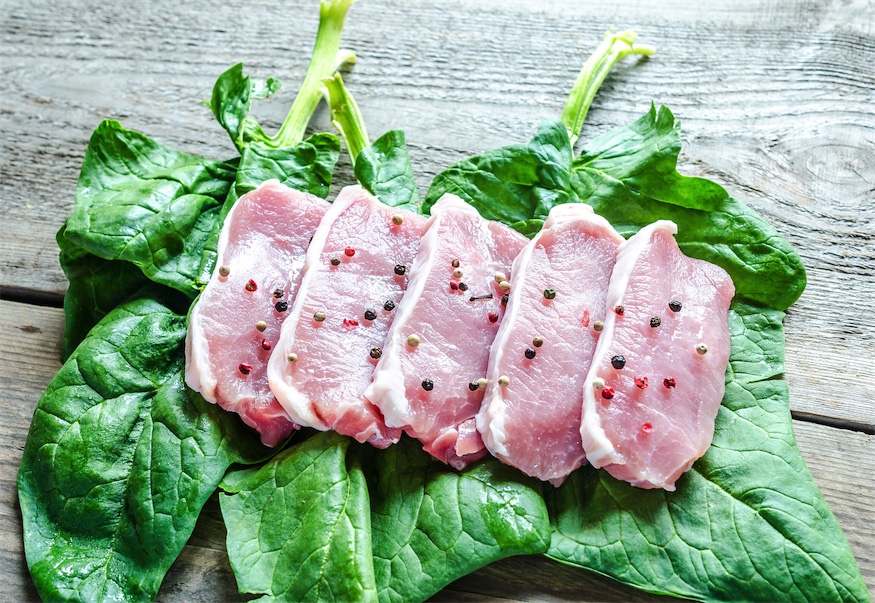Iron deficiency is the most common nutrient deficiency in the world. Although your body recycles most of the iron it requires from red blood cells, your stores need to be topped up with around 1-2 mg a day due to small losses through sweat, urine and menstruation.
Iron is available in the diet in two forms, haem and non-haem iron
Haem iron
Haem iron is from animal tissues and is absorbed 2-3 times better than non-haem iron.
Sources of haem iron
- Organ meat (choose organic)
- Red Meat (beef, lamb)
- Seafood (Oysters and sardines are the highest)
- White meat (Chicken, pork, turkey)
Non-haem iron
Non-haem iron is found in plants. It is bound to other substances and must be liberated by stomach acid and digestive enzymes making it less well absorbed compared to haem iron.
12 plant-based foods with some of the highest iron levels
- Tofu (1/2 cup): 6.6 mg
- Spirulina (1 tsp): 5 mg
- Cooked soybeans (1/2 cup): 4.4 mg
- Pumpkin seeds (30g): 4.2 mg
- Quinoa (120g): 4 mg
- Blackstrap molasses (1 tbsp): 4 mg
- Tomato paste (120g): 3.9 mg
- White beans (1/2 cup) 3.9 mg
- Dried apricots (1 cup): 3.5 mg
- Cooked spinach (1/2 cup): 3.2 mg
- Dried peaches (6 halves): 3.1 mg
- Prune juice (240mL): 3 mg
- Lentils (120g): 3 mg
- Peas (1 cup): 2.1 mg
Tips to maximise the iron in your diet
- Eat iron-rich foods along with foods that contain vitamin C, which helps the body absorb the iron. Squeeze lemon juice over your sautéed spinach or have some Vitamin C rich fruit for dessert.
- If you are consuming a plant-based diet (vegetarian or vegan), it’s worthwhile making sure you soak grains, legumes and nut to reduce the phytic acid. Phytic acid binds to minerals making them less available. This will improve your overall mineral intake.
- Tea and coffee contain compounds called polyphenols, which bind with iron reducing absorption by up to 60%. Drink your cuppa away from your meal.
- Calcium also hinders the absorption of iron; avoid high-calcium foods for a half hour before or after eating iron-rich foods.
- Cook in iron pots. The acid in foods seems to pull some of the iron out of the cast-iron pots. Simmering acidic foods, such as tomato sauce, in an iron pot, can increase the iron content of the more than ten-fold.
- Purchase a lucky iron fish. If you don’t want to buy new pots and pans, these iron fish can be added to the food when cooking to increase the iron content.
- Good news for the drinkers, moderate alcohol consumption (up to 2 standard drinks per day) also increases iron uptake.
- Address any issues with digestion. If you have low stomach acid or an imbalance in your gut bugs, you’ll have a reduced capacity to digest and absorb the iron from your diet.
Learn more about the causes of iron deficiency.

Need help with your health?
Norelle Hentschel is an experienced Naturopath with a clinic in Stones Corner, Brisbane who enjoys supporting her clients to reach their health goals.
Want more articles like this?
Receive a monthly digest of natural health information to help you become “health” sufficient!
PS. Your inbox real estate is precious, and we will never annoy you with sales pitches or share your details with anyone else. One email a month — that’s it.

